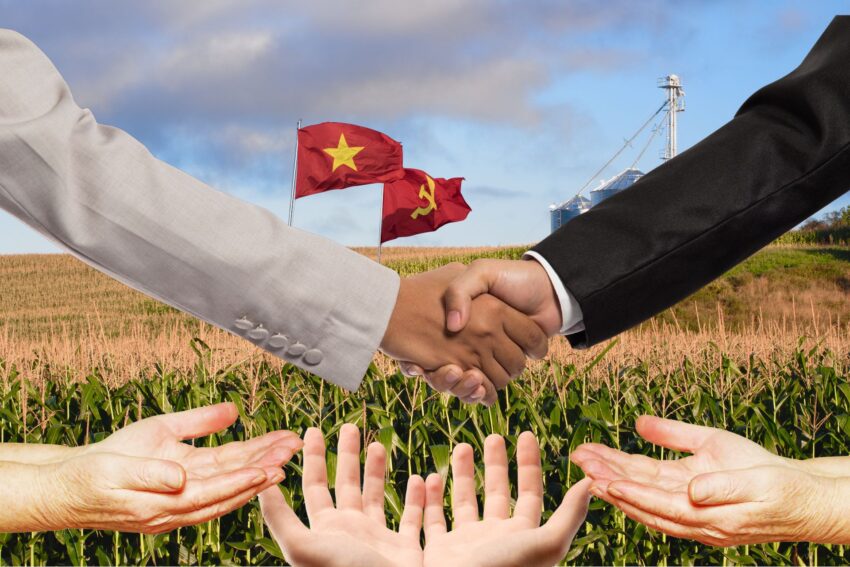“Who controls the food supply controls the people; who controls the energy can control whole continents; who controls money can control the world.” – Henry Kissinger
In this article we will be addressing the first part of Kissinger’s quote. The question of who controls food production and distribution has perennially been at the heart of power dynamics throughout history. From ancient civilizations to modern times, food has not just been sustenance but a tool for governance, control, and oppression, or conversely, a beacon of independence and freedom.
Throughout history, tyrants and rulers of empires have consistently recognized agriculture as a primary source of wealth, leading them to impose taxes on agricultural produce and land as a means to fund their expansive kingdoms and empires. This practice was not merely about economic gain but also about controlling the means of food production, which is fundamental to controlling populations.
From ancient civilizations like the Roman Empire, where agricultural taxes were a staple of the state’s revenue, to the agrarian-based economies of the Sahelian kingdoms in Africa, where control over trade routes and agricultural production was crucial for power, the strategy has been to extract wealth from the land and its yield. This taxation not only financed military campaigns, monumental constructions, and the lavish lifestyles of the ruling classes but also served as a tool for centralizing power by making rural populations economically dependent on the state or ruling entities.
Yet, there was still a good deal of freedom in rural communities throughout history, as the rulers could not push the farmers too far, lest they end up with an angry mob with pitchforks and torches in hand. Back then, most individuals were directly involved in agriculture, growing their food or trading within local communities. This self-sufficiency was not merely an economic necessity but a cornerstone of personal and community autonomy. As long as communities grew their own food, they had some independence.
However, over the centuries, this landscape has transformed dramatically. Since the Industrial Revolution, people have been encouraged to migrate to urban areas, and rural areas have been turning into urban landscapes. This reduces the number of people directly involved in agriculture, which could facilitate easier control over food production and distribution. This push is still prevalent today, with concepts like the 15-minute “smart” city being pushed by globalists at the World Economic Forum.
Also, the recent rise of industrial agriculture, driven by policies favoring large agribusinesses, has led to a significant decline in small farms. This shift isn’t coincidental but part of a broader economic strategy where control over food production becomes centralized, often in the hands of a few powerful entities or state actors. These state actors are often foreign adversaries, as we have seen with China buying up a vast amount of American farmland.
“Democracy has become a business plan.”
The corporatism of food: What we are witnessing is the controlled destruction, land grabbing and asset stripping of local farming, farmlands, fishing, seed production, rural communities, food supply and small business supply chain… pic.twitter.com/UNocZveWAw
— James Melville 🚜 (@JamesMelville) June 16, 2024
The Holodomor, where Soviet policies led to a man-made famine in Ukraine by seizing agricultural production, serves as a chilling reminder of how food control can be wielded as a weapon. This historical event underscores the devastating consequences when food production is centralized and manipulated by authoritarian regimes or, in modern contexts, by corporate entities with significant influence over policy-making.
The spotlight on agriculture at international forums like COP29, where agriculture is often scapegoated for climate change, adds a new layer to this control narrative. Discussions around altering agricultural practices fundamentally under the guise of environmental necessity raise alarms about further centralizing food systems. While efficient agriculture and environmental stewardship is crucial, the manner in which these changes are proposed often seems to be less about saving the planet and more about controlling food production under a globalist agenda.
Let’s also not forget the calls for Communist price controls on food by the Democrat nominee for US president.
Given this backdrop, the call for returning to food autonomy resonates deeply. The advice to “buy land, grow your food, and raise your animals” advocates for self-sufficiency in food production and a return to localized and independent agricultural practices.
It starts with decentralizing the food system so local food producers have more control and less regulation to sell within school systems AND to local markets. Transportation is also key so they can get their product into cities easily. Lastly, repurposing urban areas for food… https://t.co/Ze11UoVZY3
— Chef Andrew Gruel (@ChefGruel) August 24, 2024
The theme that emerges is clear: controlling food is controlling life. As global discussions increasingly focus on how agriculture should be managed, the essence of freedom lies in our ability to produce our own food. This autonomy ensures security against famine or manipulation through food and reconnects us with the land, fostering a genuinely ‘sustainable’ and self-reliant society. The journey towards food independence is not just about growing our food but about cultivating a culture of freedom, resilience, and community. Farmers are our first line of defense in safeguarding our freedoms.


